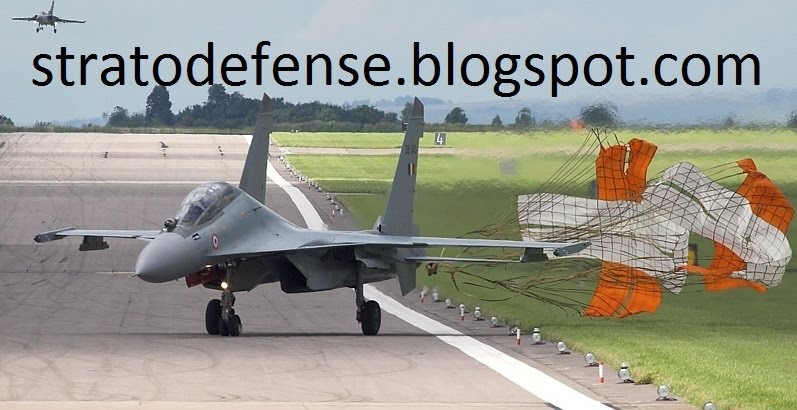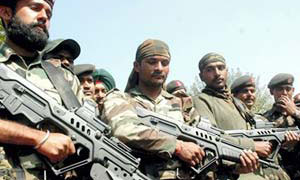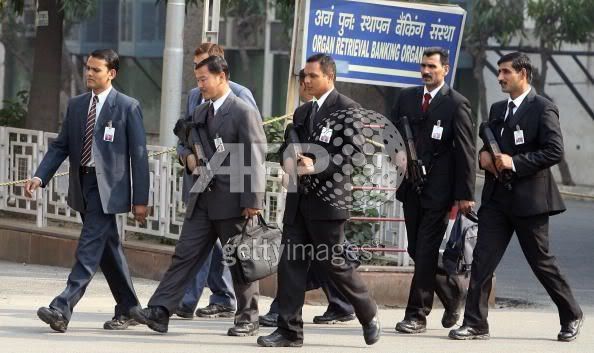
IAF currently operates two Mi-25/35 Helicopter Squadrons (No.104 Firebirds and No.125 Gladiators). IAF Mi-25s and 35s have now been painted in a low visibility paint scheme.The wake-up call to Mi-24 export operators (as many as 600 Mi-24/25/35 export types are deemed suitable for various scales of upgrade) came from Israel Aircraft Industries. It's mission 24 Mi-24 upgrade proposal was selected by the Indian Air Force in an order comprising 25 upgrade kits under a $US20 million contract signed in 1998. It proved to be a good advertisement with which to convince potential customers that a cost-effective alternative upgrade proposal exists, and was viewed as highly competitive to those offered by Russian and French companies. With an affordable and rapid integration of observation/sighting, navigation, self-defense and self-protection equipment proven in real-world operational conditions, the helicopter could perform well in the demanding CAS/AA role in the 21'st century battlefield, including at night and in adverse weather.
IAI's Tamam electro-optical division was quick to offer an affordable upgrade package for the Mi-24 that required reduced development time and risk. The Indian Air force contract covered prototype manufacture and testing in Israel, with production conversion to be undertaken at the customer's facilities. No airframe, flight control system, autopilot, power plant, transmission or rotor system changes have been made by Tamam due to the complexity and costs of such rework and any subsequent required qualifications.
The Mission 24 upgrade package as sold to the Indian Air Force is built around a 1553B digital databus. The heart of the upgrade is a single mission computer developed with IAI MLM; it is a derivative of the model used in the US Air Force T-38 upgrade program, in which IAI is the principal subcontractor.
Mission 24 utilizes Tamam's proven helicopter multi-mission optronic stabilized payload HMOSP, which weighs around 30 kg (66 lbs). It is an improved turret ball mounted derivative of the combat proven IAI Tamam night targeting system installed in the US marine corps AH-1W super cobra and Israeli DF/AF Cobra attack helicopters FoV (between 2.4 deg and 29.2 deg on the FLIR).
The HMOSP can incorporate two types of FLIR: a scanning array 4 x 480 Cadmium-mercury-telluride detectors, operating in the low-wavelength band, and a 320x 240- element indium-antimony focal plane array functioning at the middle wavelengths. Monochrome or color CCD TV cameras are included, together with a laser rangefinder, designator and pointer, plus a built in auto-tracking unit that uses centroid and edge-tracking techniques.
The cockpits are NVG compatible, and both crew members have the option to use IAI's advanced NVG set built-in monocular display on which all necessary navigation and targeting information can be presented. Both cockpits feature a single multi-function display (MFD) for TV, FLIR and targeting information, in addition to a keyword and display unit for navigation and communication control. The CPG has control grips borrowed from the AH-1W, with all necessary sensor/weapons control switches and knobs; such devices when combined with the MFD, can dramatically change work practices and reduce workload.
The HMOSP has been integrated with the Shturm-V ATGM SLOC guidance system through an IR goniometer and interface unit designed by IAI Tamam engineers, which has fully replaced the original old and bulky Raduga-F sighting/ATGM optical tracking system. The unit weighs more than 200 kg (440 lb). The Raduga-F 's role for targeting and tracking both the target and missile was taken over by HMOSP, with guidance commands being produced and transmitted to the missiles through the existing equipment. Russian sources indicated in 2002 that Tamam experienced some guidance problems during Shtrum-V test firings using the HMOSP system in place of the Raduga-F. In order to solve the sensitive missile guidance problems, IAI contacted the Russian design authority for the Shtrum, the KBP company of Tula, which provided important technical assistance. The contact was arranged through the Russian arms export agency Rosvoorouzhenie predecessor of Rosoboronexport.

KBP help is believed to have been instrumental in solving the software/hardware, guidance and control problems associated with the HMOSP/Shtrum-V assimilation on India's upgraded Mi-24s. There are other types of ATGMs on offer for the Mission 24 system, such as Rafael's Spike-ER that has a maximum range of 7 km (3.8 nm) and employs 'fire-and-update' fibre optic guidance. However the Indian Air Force, which has ample stocks of Shtrum-V missiles, preferred to limit the guided weapons integration work on it's upgraded choppers to the relatively cheap and well-proven Russian made supersonic ATGM. The Shtrum-V is still considered to be highly effective against older generation MBT's, such as the Chinese made Type-59/69, the chief potential targets for Indian 'Hinds' in a future war with Pakistan. Integration of the Indigenous Nag ATGM is known to have been earmarked for IAF Mission 24 machines at a later stage.
Navigation improvements introduced by IAI include a GPS receiver integrated into the existing DISS-15D Doppler sensor, and a three-dimensional digital map display. Both the HMOSP and YakB-12.7 gun are slaved to the pilot's line of sight through the use of a helmet-mounted sensor; the machine gun can also be slaved to the HMOSP. IAI chaff/flare dispenser units and Elta radar/laser/missile warning systems have provided a self-defense capability. The total weight of these new systems is about 50 kg.
It was reported that the production phase of the Indian Air force mi-35 was successfully running in 2001 or 2002. During the contract implementation phase, the IAF was tight lipped about the upgrade details, and IAI has also been reluctant to disclose the details of the launch customer for its Mission 24 package. The upgraded helicopters, in overall light grey camouflage, were displayed publicly for the first time during the Aero India 2003 air show in Feb 2003 in Bangalore.
In a nutshell, the package includes:
*A day-night sight with TV and FLIR.

*A mission computer.
*NVG-compatible cockpit with MFDs and moving-map display.
*Support for helmet-mounted sights.

The HMOSP and the 12.7mm four-barrel machine gun are slaved to the pilot's line of sight.
*A countermeasures suite.
*Global Positioning System (GPS) satellite navigation network receiver.
*Support for the AT-6 Spiral and Rafael Spike antitank missiles.


.jpg)


































